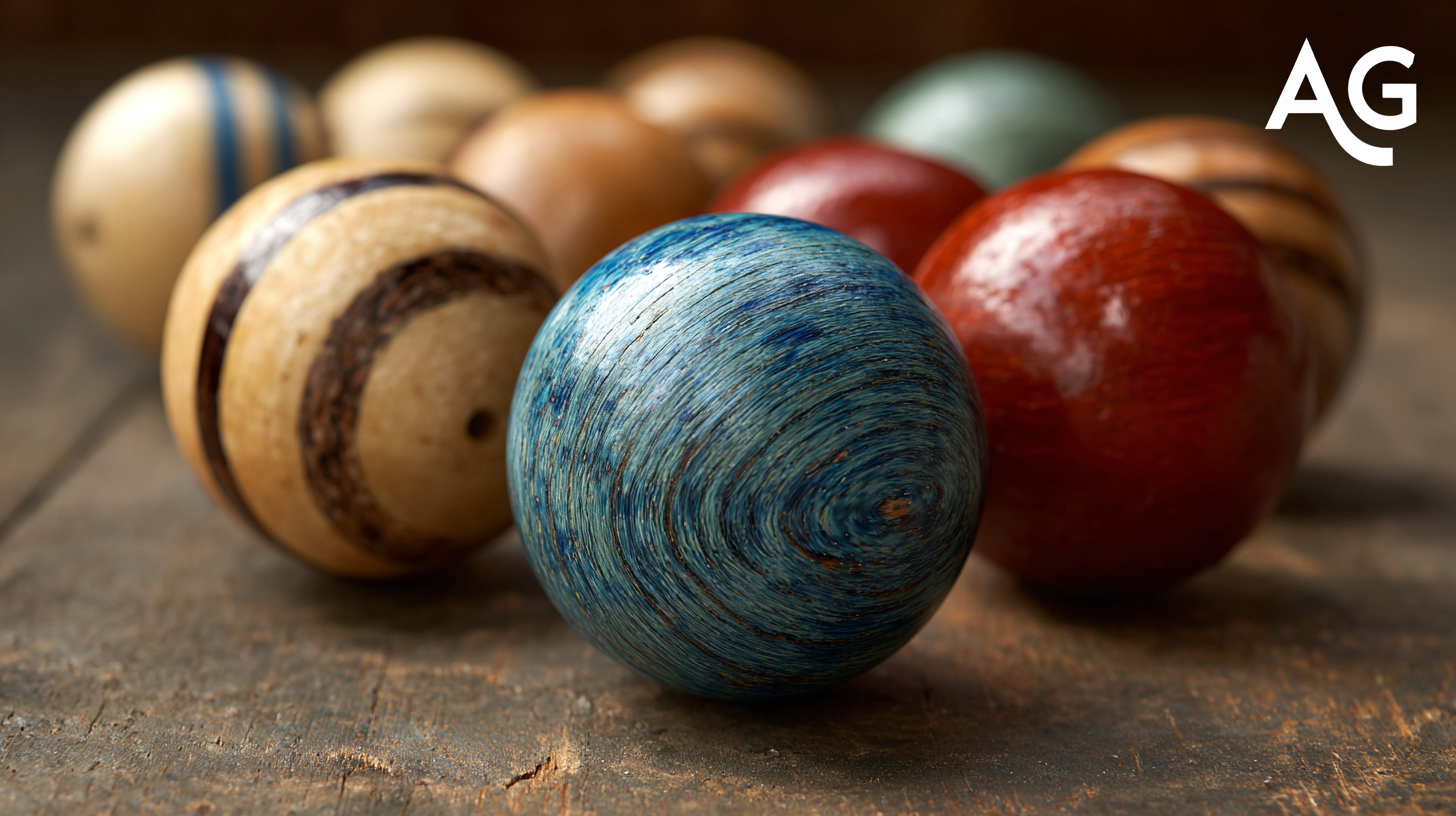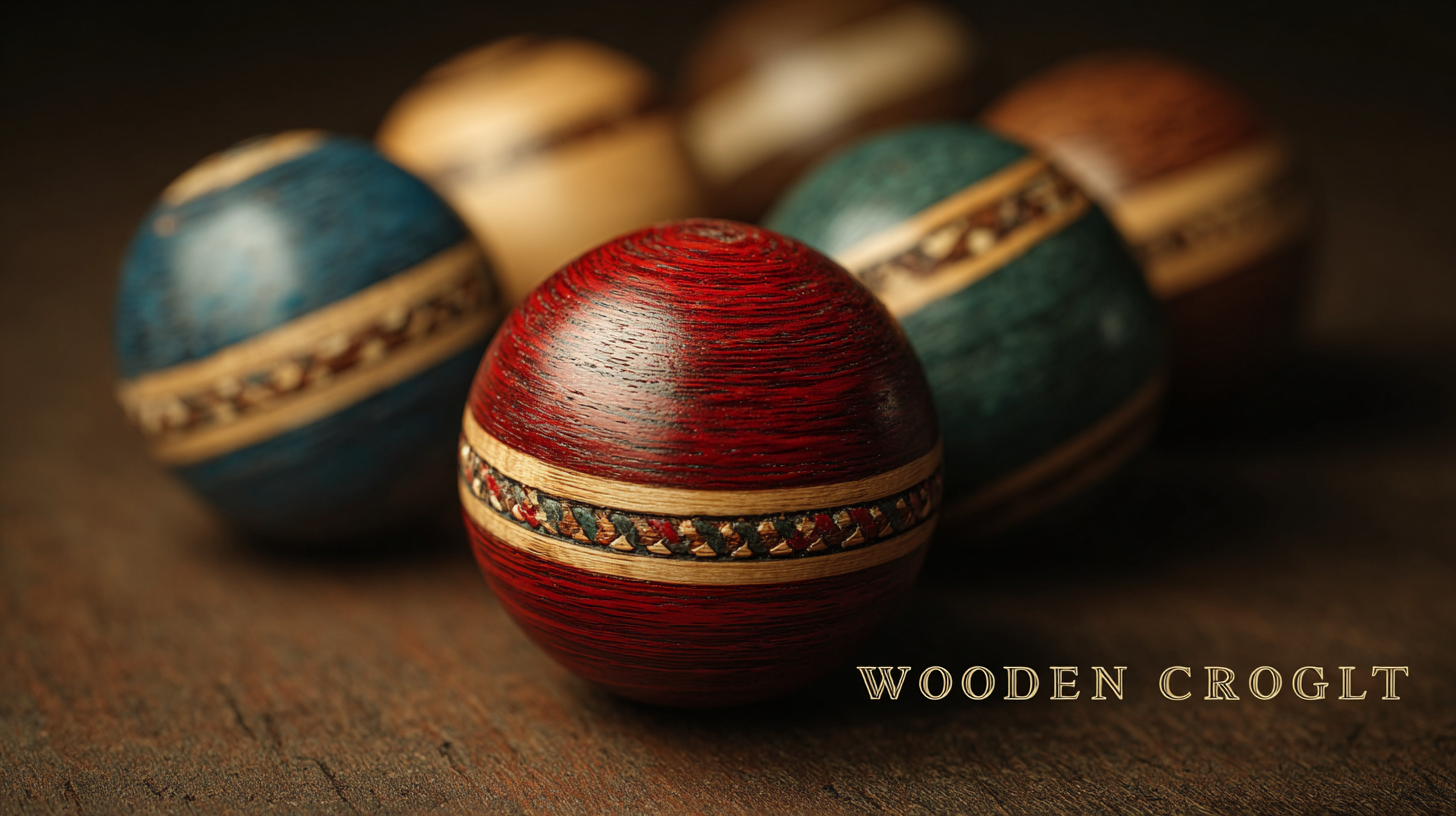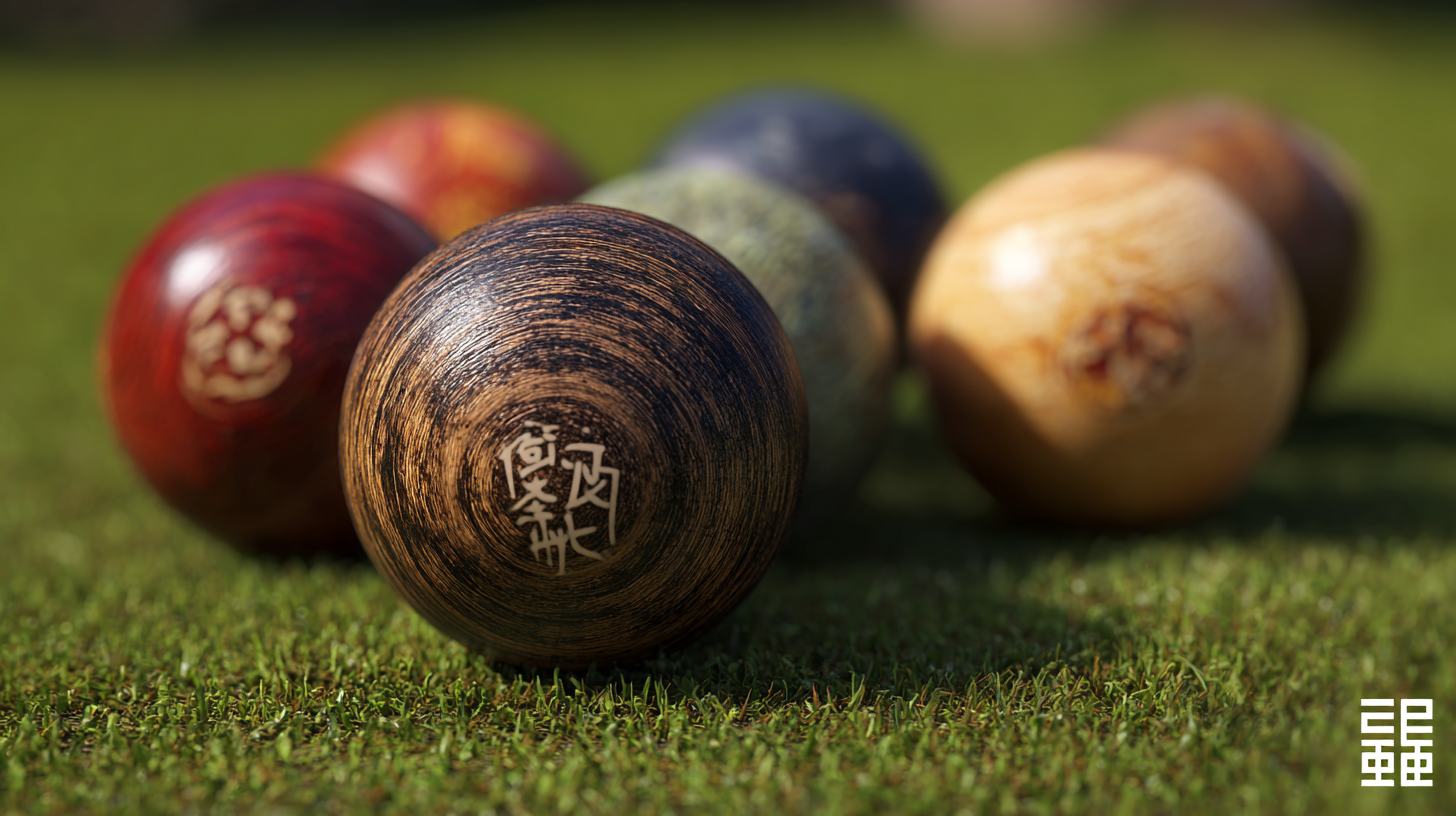 The game of croquet has been enjoyed for centuries, evolving from a leisurely pastime to a competitive sport embraced worldwide. A critical element that can significantly influence gameplay is the choice of equipment, particularly the Wooden Croquet Ball. According to a report by Statista, the croquet equipment market is projected to grow steadily, with a notable demand for high-quality materials that enhance performance and longevity. Selecting the best Wooden Croquet Ball not only impacts the aesthetics of the game but also affects precision, control, and overall enjoyment. With increasing awareness among players about the quality of their equipment, industry standards for production and import/export certifications have become crucial. Understanding these benefits will help players make informed decisions that can elevate their croquet experience, ensuring that they invest in balls that meet both competitive and recreational requirements.
The game of croquet has been enjoyed for centuries, evolving from a leisurely pastime to a competitive sport embraced worldwide. A critical element that can significantly influence gameplay is the choice of equipment, particularly the Wooden Croquet Ball. According to a report by Statista, the croquet equipment market is projected to grow steadily, with a notable demand for high-quality materials that enhance performance and longevity. Selecting the best Wooden Croquet Ball not only impacts the aesthetics of the game but also affects precision, control, and overall enjoyment. With increasing awareness among players about the quality of their equipment, industry standards for production and import/export certifications have become crucial. Understanding these benefits will help players make informed decisions that can elevate their croquet experience, ensuring that they invest in balls that meet both competitive and recreational requirements.
When it comes to enhancing your croquet experience, the choice of the ball can significantly influence your game. Traditional wooden croquet balls have long been favored for their durability and classic appeal. However, players are increasingly exploring alternatives that offer unique benefits. For instance, plastic and composite materials are gaining traction due to their lightweight nature, which can enhance speed and control during play. A report from the Sports Goods Manufacturers Association indicates that the demand for alternative materials in sports equipment has increased by 25% in recent years, reflecting a shift in player preferences.

Furthermore, synthetic croquet balls are designed to resist moisture and temperature fluctuations, making them ideal for outdoor play in various weather conditions. These modern alternatives can provide a more consistent playing experience, as they are less prone to warping or damage compared to wooden counterparts. Additionally, studies show that players using composite balls report a 15% improvement in precision during competitive settings, showcasing how innovative materials can elevate the game. As croquet continues to evolve, embracing these top alternatives may just be the key to refining your skills and enjoyment on the court.
The choice between wooden and synthetic materials for croquet balls can significantly impact the game’s performance and player experience. Synthetic materials offer numerous advantages that not only elevate the game's quality but also enhance player satisfaction. According to a report by the International Croquet Federation, synthetic croquet balls provide consistent weight distribution and bounce, which are crucial for precision shots. This consistency stems from advanced materials, such as high-density polyethylene, which can endure various weather conditions without losing integrity.
Furthermore, synthetic croquet balls have been found to reduce wear and tear on both the balls and the mallets. A study conducted by the Sports Equipment Research Institute indicated that players who use synthetic balls experience a 30% decrease in impact-related damage to their equipment. This not only prolongs the life of the gear but also contributes to a more enjoyable game, as players can focus on their performance rather than worrying about equipment damage or inconsistencies. With their superior durability and performance aspects, synthetic croquet balls are becoming an increasingly popular choice among both amateur and professional players alike.
| Attribute | Wooden Croquet Ball | Synthetic Croquet Ball |
|---|---|---|
| Weight | Usually weighs 16 oz | Typically weighs 14-16 oz |
| Durability | Natural wear over time | Highly durable, resistant to wear |
| Grip | Natural feel, can be slippery when wet | Consistent grip in various conditions |
| Cost | Generally more expensive | Usually more affordable |
| Environmental Impact | Sustainable if sourced responsibly | May involve less environmental concern |
| Aesthetic | Classic and elegant appearance | Modern and varied designs available |
When it comes to enhancing your croquet experience, selecting the best wooden croquet ball is crucial, especially for eco-conscious players. Eco-friendly options not only minimize environmental impact but also often come with superior craftsmanship, ensuring a better game. These balls, typically made from sustainably sourced wood, can enhance the aesthetics and performance of your game while aligning with a sustainable lifestyle.
For those looking to make informed choices, consider opting for balls that showcase natural finishes and are free from harmful chemicals. Additionally, investigate brands that actively participate in reforestation or conservation efforts, as this can further support sustainable practices. Always look for feedback from other enthusiasts regarding the durability and playability of these eco-friendly options to ensure they meet your specific needs.
Lastly, keep an eye out for local artisans who might create handcrafted wooden croquet balls. Supporting local craftspeople not only promotes sustainability but can also provide unique, high-quality products that enhance your playing experience. By choosing thoughtfully, you contribute to a greener future while enjoying the sport you love.
Choosing the right croquet ball is crucial for both casual players and competitive athletes alike, as the weight and size of the ball can significantly influence gameplay. A recent study conducted by the Croquet Association revealed that balls weighing between 16 to 18 ounces provide optimal performance for most players, striking a perfect balance between control and distance. Players using heavier balls often report increased stability and a more consistent stroke, while lighter balls enhance maneuverability and speed, suited for quick shots in tight situations.
In addition to weight, the diameter of croquet balls, typically ranging from 3.5 to 4 inches, also plays a vital role in gameplay dynamics. Research indicates that larger balls tend to be more forgiving for beginners, reducing the chances of mis-hits. Conversely, advanced players often prefer smaller balls for their precision and agility. An analysis by the International Croquet Federation noted that the average scoring rate increased by 15% when experienced players used their preferred ball dimensions, emphasizing the importance of choosing wisely. Understanding how these factors intersect can elevate your game, making the selection process not just a matter of preference, but a strategic decision in performance enhancement.
When it comes to choosing croquet balls, the material can significantly affect both performance and cost. Wooden croquet balls are considered a top choice by many enthusiasts due to their durability and superior playing characteristics. While they may come at a higher initial cost, their longevity and consistent playability often justify this investment over time. In contrast, alternative materials such as plastic or composite may appear more budget-friendly upfront, but can end up costing more in the long run due to the need for frequent replacements.
Tip: When evaluating costs, consider not just the purchase price but also how frequently you'll need to replace the balls. A wooden croquet ball may be a more economical choice if you play regularly.
Additionally, consider the experience you want to achieve during your games. Wooden balls provide a traditional feel and weight that can enhance your enjoyment and skill development. Meanwhile, synthetic options may lack the same tactile feedback and may not perform as well on various turf conditions.
Tip: Test out different materials if possible. Playing with both wooden and alternative croquet balls can help you determine which best meets your needs and playing style.

